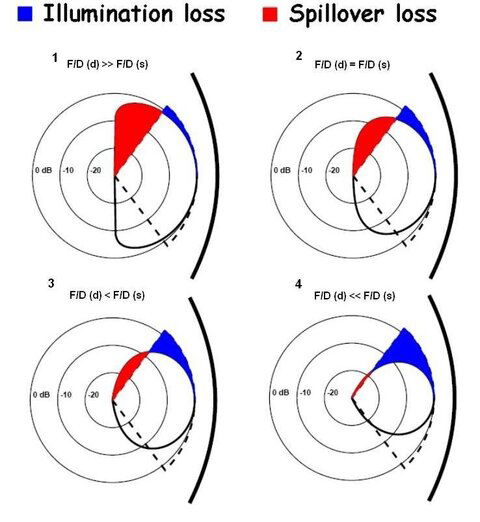If there's more ridges, or deeper, comparing one to the other. Check the length of the original feed horn "out the front" at a particular setting. Then place the new feed horn at the same length "out the front". Compare the F/D setting marks.
I say this because somewhere BITD, I think it was the big BV scalars, more feed was "out the front" compared to a chaparral, for the same F/D. Don't remember it being much, somewhere around 3/8 to a half inch. I think its because a scalar is actually an RF Choke. More choke = tighter pattern.
In the attached, F/D (d) = the F/D of the dish, F/D (s) = the F/D setting of the scalar on feed horn.
I theorize that setting the F/D of the scalar/feed below the calculated F/D ratio, as shown in #1, (But not to an extreme) may help an undersized dish get some signals as the illumination of the dish is increased. But may encounter increased interference from terrestrial sources.
#4 would be desirable if the dish exhibits excess gain, with normal F/D settings, but terrestrial noise is excessive.
(I think my theories are correct as I remember someone, a while back, taking my suggestion and trying reducing the scalar F/D setting and having success in a particular case. I believe it was a 5 ft prime focus )
Example 4 would also encompass a Ku LNBF intended for an offset dish (F/D ~.6) on a BUD.
Only illuminates a very small area of the dish.


